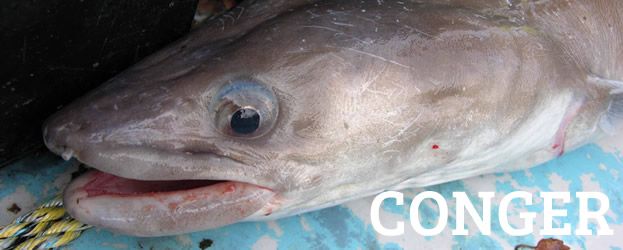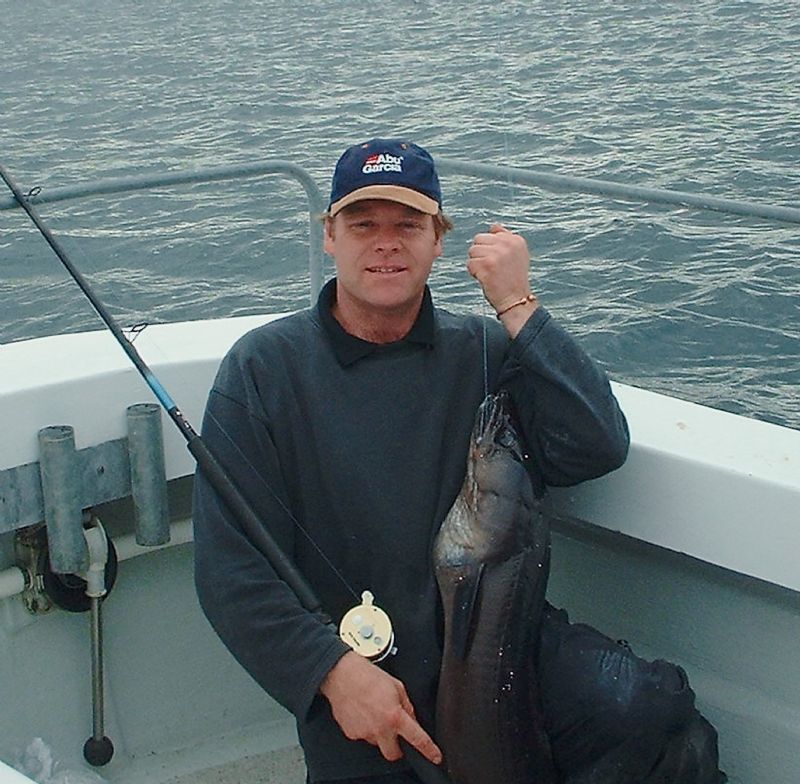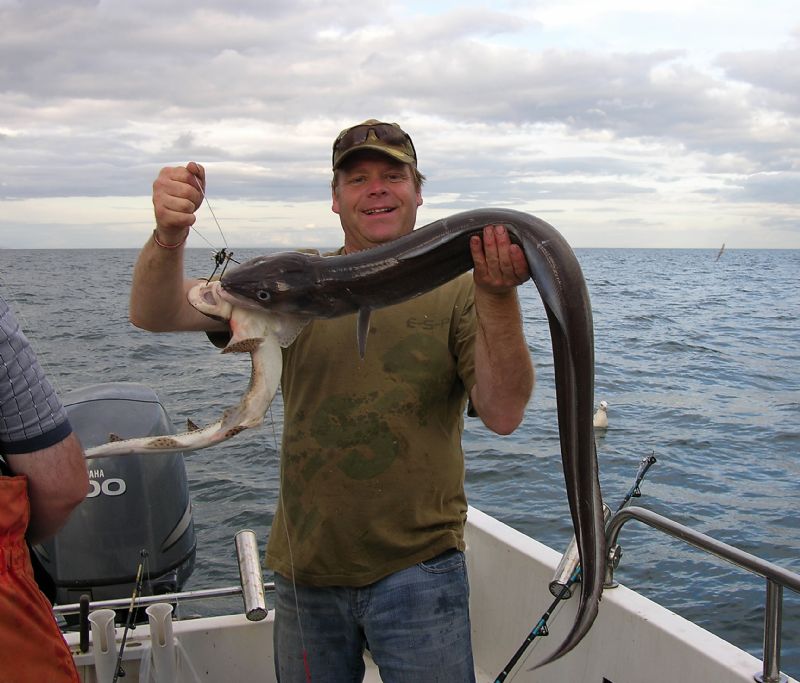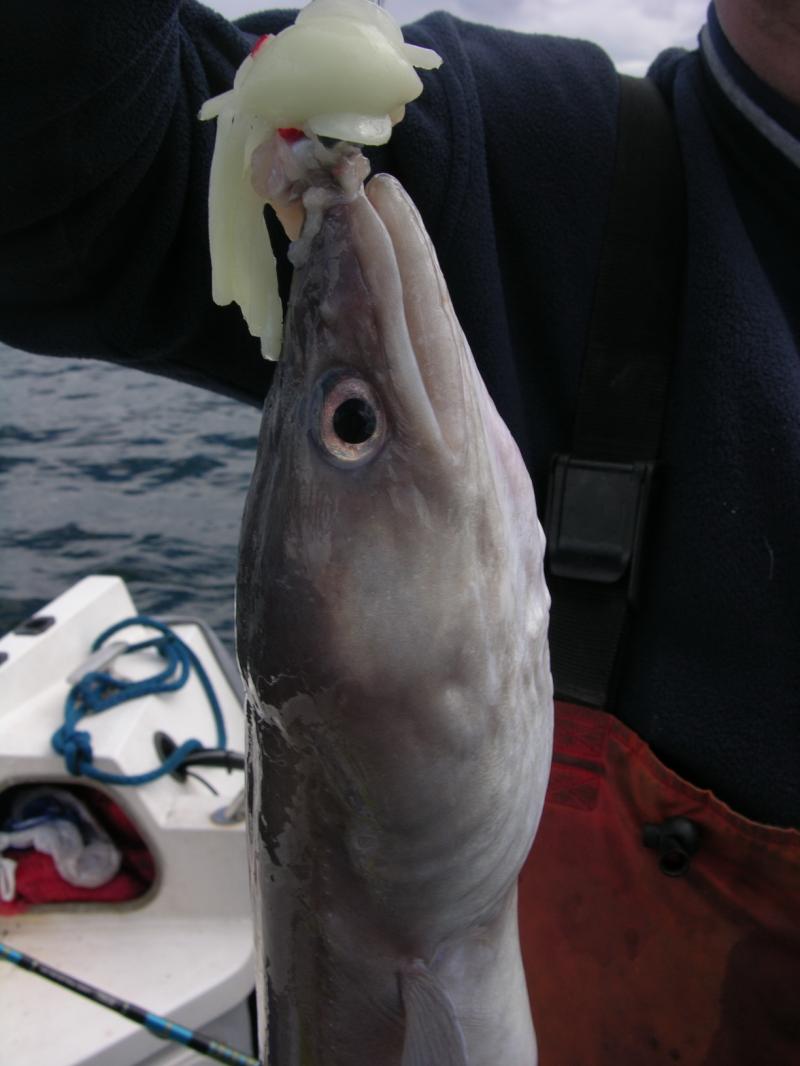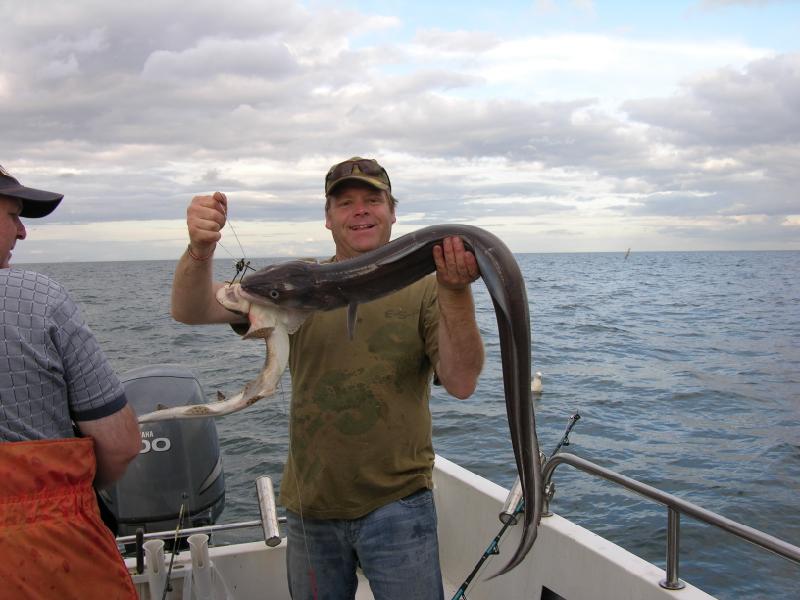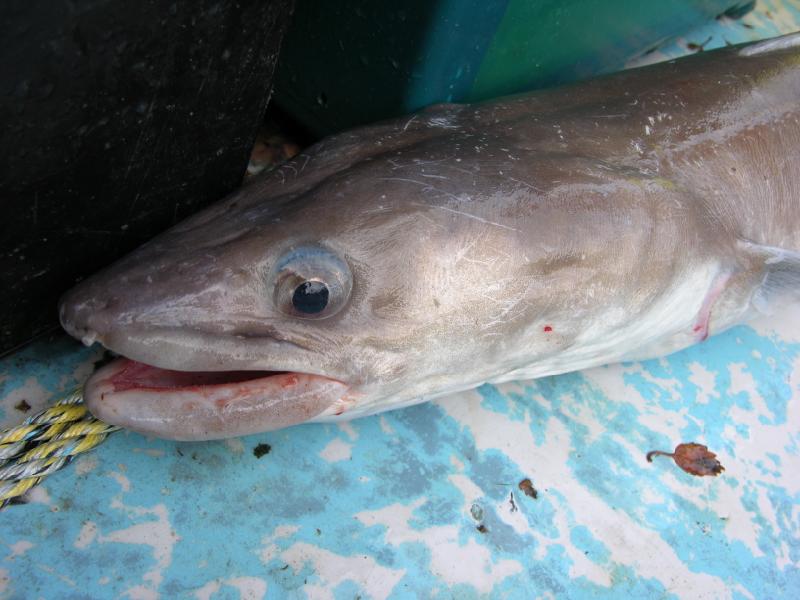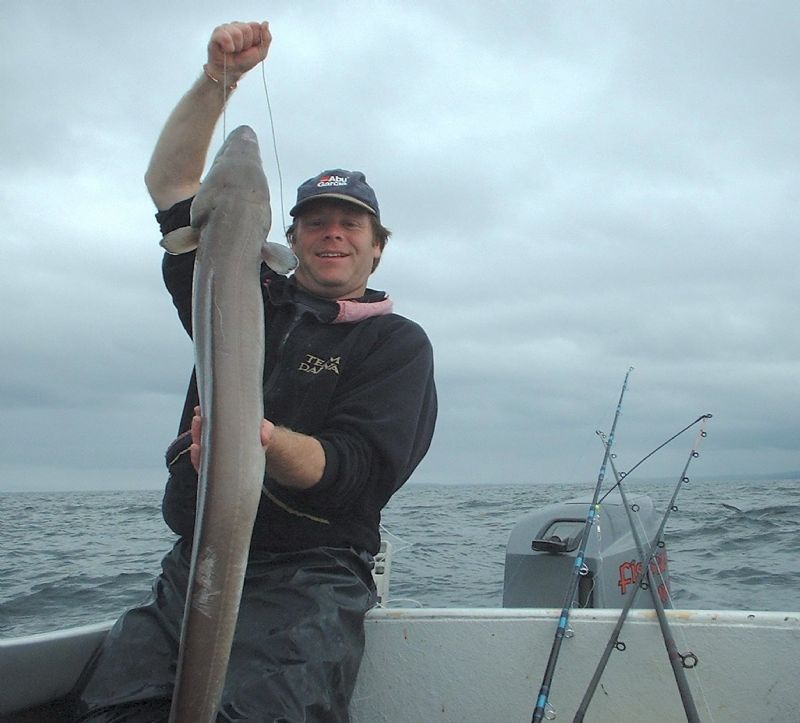Conger Eel
Conger Eel (Conger conger)
Irish Record 72lb taken in June 1914 by J. Green at Valentia.
Specimen 40lb, or 18.144 kilo, or 165cm total length
Identification
Conger Eel requires little description. Normally Conger will have a cream under-belly leading to silver-grey flanks and a grey to dark grey back. Colours may vary depending on venue, ranging from light tan to pure black. These are powerful fish, and cause problems to the angler as they are the only species in Irish waters that can swim back-wards with as much power as forwards!
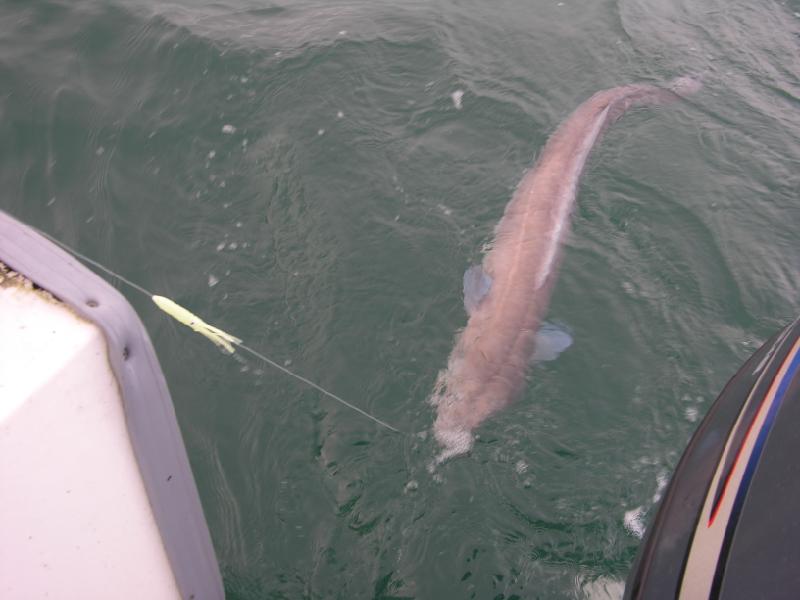
Where to catch
Conger Eel can be found around the entire Irish coastline. Small eels, known as strap conger are present on almost every rocky headland and many larger fish inhabit the same rough-ground areas. The base of piers and jetties are excellent and offer the possibility to produce specimens, but in general, most of the larger fish are taken from off-shore reefs and wrecks. The well-known ports and harbours around the Cork coastline regularly produce large eels but a specimen can turn up from almost anywhere. Inshore reefs tend to hold healthy numbers of congers with fish ranging from a couple of pounds up to thirty pounds or so. If you are targeting the really large specimens, offshore wrecks lying in 150-250 feet of water offer the greatest chance of success. The Irish record has now stood for nearly a century and with 100lb fish being taken quite often in British waters, a new Irish record must be on the cards.
Notable Conger marks are the series of reefs that run off-shore of Cork Harbour and Ballycotton, rough ground marks at Roche’s Point, Valentia, Dungarvan, Kinsale, Castletownbere, Courtmacsherry and Red Bay.
When to catch
Summer through to late autumn is the peak season. The cold winter months coupled with a fall in sea temperature marks the end of the Conger season in-shore, but deep holes and gullies of 150-200 metres found off-shore sometimes manage to produce large fish through winter months.
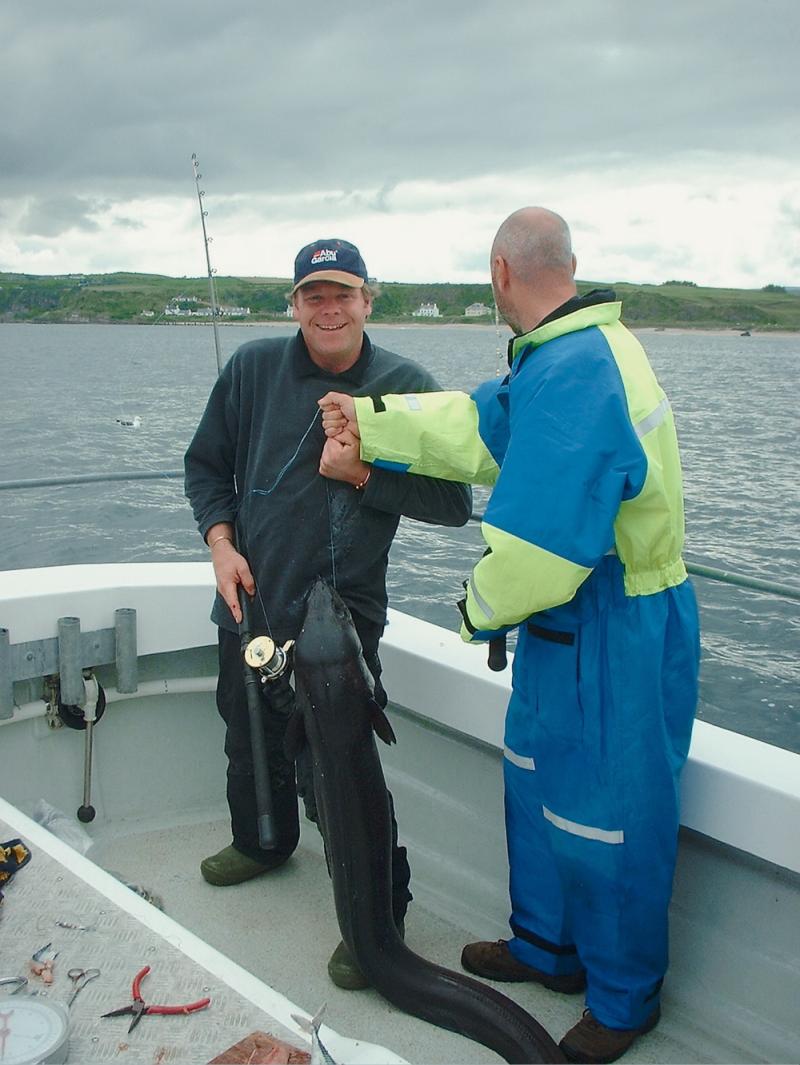 40lb eel aboard Sean McKay's charter boat out of Ballcastle, filming "Big 6" for BBC
40lb eel aboard Sean McKay's charter boat out of Ballcastle, filming "Big 6" for BBC
Bait
If possible, always use fresh Mackerel, generally the fresher the better. Fresh Pouting can be a good second choice or whole Squid or Coalfish if Mackerel is scarce. Cut the Mackerel on both sides from the tail up to the head and remove the backbone. This leaves the head, guts and two fillets known as a "flapper". It “oozes” a great scent trail and attracts fish from some distance down-tide, excellent Conger bait.
Methods
Unless competition angling, it is advisable to keep the rigs simple. One hook on a Running Ledger is sufficient, any more hooks can cause problems in “snaggy” areas and more importantly can be dangerous on the surface when trying to land these very powerful fish. Make sure the hook is strong such as an O'Shaughnessy pattern, size 6/0 to 10/0 depending on bait size. Wire biting trace or mono of 250lb is necessary, coupled with heavy duty, quality swivels and a sliding boom. Keep the trace reasonably short; two to three feet would be fine, as Conger prefer the bait tight on the seabed. A common practice in the Cork area for catching Conger is to replace the treble hook on a pirk with a large single hook, bait up with Mackerel and leave the pirk motionless on the seabed. When the rod tip nods once or twice, gently lift the pirk up. The eel will often follow the bait off the bottom before being hooked and can then be played in open water, away from any snags. This works extremely well over reefs.
A 30lb class set-up will cope with most Conger encountered, load the reel with 50lb b/s braid for tide-cutting qualities and sensitive bite detection. Unless you wish to bring the fish aboard for weighing or photographing, it is a great deal handier to quickly T-Bar and release an eel on the surface.
Conger Eel article
http://www.angling-ireland.com/species_hunt_part_11




